Today is our Focus: INDIA AS VIEWED BY EARLY ARAB MUSLIM HISTORIANS
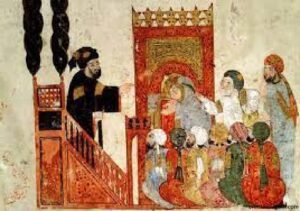
INDIA AS VIEWED BY EARLY ARAB MUSLIM HISTORIANS
Before the advent of Islam, the Arabs had strong trading ties with India, more specifically with the business communities of the region of western coast The trade ties gave rise to close social and intellectual interaction as reflected in the writings of Arab historians and travellers particularly from eighth to fifteenth century.
Syed Sulaiman Nadwi in his important work Arab Wo Hind Ke Tallugat (The Indo-Arab Relations) has made a survey of the writings of Arab historians and Maulana Manazir Ahsan Geelani in his book Hazaar Saal Pehle (Thousand Years Before) has quoted extensively from the writings of Ibn Hauqal, Sulaiman Tajir, Masoodi Buzurg bin Shaharyar, Qafti, Sheikh Mubarak. Aqleeshi and other scholars. These accounts supply not only very valuable information about India but they are so full of admiration in tone and tenor that they sound more like the works of devoted patriots than objective scholars.
These writers have spoken in detail about India, its people, products, the rulers and the political and social systems. The authors appear to be fascinated by the extent and scope of Indian knowledge and wisdom and have written extensively about philosophy, medicine, mathematics and other branches of Indian knowledge.
This article gives a few samples of their writings that will help to understand how the early Arab Muslim historians viewed India.
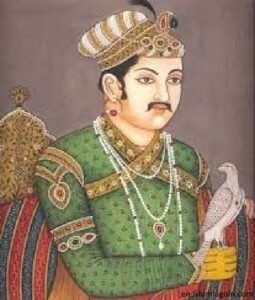
ON INDIA, INDIAN KINGS AND INDIAN PEOPLE
The Arabs generally believed that there are only five Kings in the world and the King of India was distinguished on account of his love of knowledge and wisdom. The following extract from Jamaluddin Al-Qafti reflects this belief
The real rulers of the world are five and they are the Kings of India, China, Turkey, Rome and Iran. All other rulers belong to the camps of one or other of these kings. The importance of the Indian King is that he is the King of Wisdom and Knowledge. In India the rulers pay inordinate attention to the development and promotion of Knowledge and crafts. All the ancient nations of the world are agreed that the Indians are the leaders in the fields of wisdom, knowledge and useful crafts
In another comment on the same page Qafti says that ‘It must be acknowledged that India has enjoyed the reputation of being the fountainhead of knowledge and wisdom and seat of justice and statecraft since time immemorial. He makes special mention of Indian expertise in Mathematics and Music and remarks that the Indian method of calculation is very precise and can be learnt and mastered easily.
Finally, Qaft says: All this shows the intelligence and sharpness of Indian mind. They have mastered the great art of logical conversation and possess tremendous discernment so as to make best choice out of available options.
(Tareekhul Hukma, p. 175)
THE KING OF BALHARA
Sulaiman Tajir, in his travel accounts devotes considerable space to the King of Balhara. He says that ‘the King of Balhara has the largest dominion in India and other rulers acknowledge his primacy. When the envoys of King of Balhara visit other rulers then the rulers do Dandwat (show reverence) to the envoys as a mark of acknowledgement of supremacy of Balhara.”
After describing several notable features of the Balhara kingdom like the design and size of the coins, Sulayman makes special mention of the extraordinary long periods of the rule of Balhara kings and concludes with the remark: The rulers of Balhara believe that the secret of their long lives and stable governance is that they have feelings of love and goodwill for the Arab Muslims.
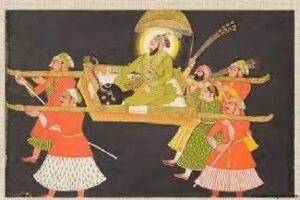
INDIAN KINGS, THEIR DRESS AND MODE OF TRAVEL
The accounts of Arab historians contain great details about Indian Kings and rulers. There is graphic description of the dress worn by the rulers when they appear in public Sulayman Tajir writes: “The Indian kings wear earrings and necklaces studded with precious stones. The high ranking officials and other wealthy people also follow this practice (Sulayman, p. 145)
Buzurg bin Shahryar writes about the palanquins used by the Kings to travel from one place to another. He says:
In India, the rulers and other men of wealth travel by palanquin known as Hindol. This is like Muhaffa (Hauda) and is carried by men instead of camels. The palanquin has a special box to prepare the betel chewed as mouth freshener.
There are other men who march behind the palanquin carrying various provisions needed during the travel. The kings take round of the cities riding in these palanquins. They keep chewing the betel and use another engraved utensil kept by their side to throw in the betel waste.
COURT ETIQUETTES
Buzurg bin Shaharyar in his book Ajabul Hind says:
In the country of gold (India) the court etiquette demands that each and every person attending the court or appearing before the ruler should sit in a respectful posture that is prescribed in detail. This posturing is known as BARSEELA. Any violation of Barseela is not only frowned upon but attracts heavy fine. But the Muslims alone are permitted to sit in a different manner by the ruler and no fines are imposed on them for departing from Barseela.
(Ajaibul Hind, p. 196)
THE KINGS APPEAR WITH THEIR QUEENS
Sulayman Tajir has observed that “The kings of India often preside over the courts in the company of their queens. The queens appear unveiled before those who attend the court, be they Indians or the foreigners’
LETTER OF INDIAN KING TO CALIPH UMAR
Caliph Umar was the second head of Medina government after the death of Prophet Mohammed. The following is the letter written by an Indian prince to the caliph and has been reported by Muqim bin Hammad in his book on history.
This letter is from King of the Kings who is son of one thousand kings (meaning descendant of a dynasty ruling since last one thousand generations) and has one thousand princesses in his wedlock, and owns one thousand elephants. He is in possession of such rivers that irrigate the crops of incense wood, spices and camphor whose fragrance travels twelve miles.
(Agdul Fareed, Volume 1, p. 14)
ON ADMINISTRATION OF JUSTICE
Sulayman Tajir has paid glowing tributes to the system of administration of justice in Indian states and says that:
In cases where the verdict results in capital punishment, the Judge asks the complainant if he would agree to subject the accused to the trial by fire. If he gives his consent then seven leaves of a particular tree are placed on the hand of the accused and then a red hot piece of iron is put on those leaves.
In this position the accused is made to run to and fro. Then this hand is covered with a cloth bag with royal seal. After three days the cloth bag is removed and if it is found that the hand was not affected by the fire then his innocence is presumed and the punishment order is withdrawn. But in such cases the complainant is subjected to a heavy fine that is collected by the royal treasury.
He further writes:
The alternative method is to heat the water in a cooking pot of iron or copper. After the water starts boiling a ring is thrown into the pot and the accused is asked to put his hand into the boiling water to take out the ring.’
Sulayman concludes the chapter saving that he himself saw a man put his hand into this boiling water and his hand remained totally unaffected from heat and he took out the ring from the boiling water pot
(Sulayman Tajir, p. 49)
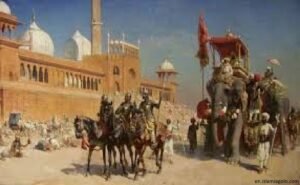
INDIAN RELIGION AND PURSUIT OF KNOWLEDGE
Abul Fida in his book on history discusses the religions and communities of India under the chapter titled ‘Albrahma’ He makes very profound observation on p. 94:
They (Indians) attach great importance to meditation and knowledge (Dhyan and Jnan). They use meditation as a bridge between the Seen and Unseen. Indian sages undergo severe penances and pursue their goal with great devotion and single- mindedness and succeed in establishing harmony between the conscious and the unconscious world. At this stage, many mysteries are revealed to them and they acquire tremendous capacity to look into the future and gain access to such psychic powers that if they simply will something, it happens.
IDOL WORSHIP
Masoodi has dealt with the subject of idol worship in detail. In this regard, he compares some Indian communities with Arab Quraysh, who believed in idol worship and invoked their objects of adoration during their But the way Masoodi treats the subjects of idol worship and belief in One prayers. Omnipotent and Formless God shows the depth of his study of Indian religious beliefs and practices. In his profound remarks he says:
The men of wisdom have very sturdy belief in One God and invoke Him and Him alone. The idols that they place before themselves while praying serve as Qibla (orientation or focus of attention) But those who lack knowledge and understanding sometime take these idols as associates of God. There are others who adore idols hoping that these idols will bring them closer to One God. The men of wisdom and those of ordinary knowledge share this belief.
(Masoodi, p. 191)
ON SANYASIS AND MENDICANTS
Writing about the religious men, Sulaiman says that in India there is a section of mendicants who are known as Ramte Jogi (roaming sages). They generally dwell in the forests and mountains and avoid meeting dwellers of the cities. The Jogis sustain themselves on forest herbs and wild fruits. They render themselves unfit for sex by piercing an iron ring around their male member.
Some of them remain completely naked and others use the skin of lions and other animals to cover themselves. Many of them stand in the open without any cover, exposed to the heat of the sun and cold of the night. I had myself seen one such person and on my return after sixteen years saw him standing in the same posture. I was wonderstruck to see his prowess and capability to endure the vicissitudes of weather.
The names of the places used by the Arab historians are often confusing and difficult to identify. Many of these historians have referred to Balhara but Sulayman Tajir in his account says that Balhara is known by the name of Kumkum as well. Some scholars have taken Kumkum as the corrupted form for Kokun on India’s western coast. Then, he mentions Al-Jazar, again a corrupted form of Gujarat He also makes reference to the region of Tapti and asserts that the women of this region are considered most beautiful in India.
SEARCH FOR PEACE AND TRANQUILITY
Allama Muqaddisi in his book Ahsanut Taquaseem gives detailed account of India and narrates an interesting anecdote about an Indian who lived in a lonely desolate place between Baluchistan and Makran and lived off a few vines of grapes he tended in the desert Otherwise, this area was known for highway bandits who often plundered the trading caravans.
Muqaddisi says that he asked the lone resident how he lives in this place all by himself. The man replied that he once had gone to a town and lived there for one month but came back to this place in search of peace and tranquility and is very happy with his life.
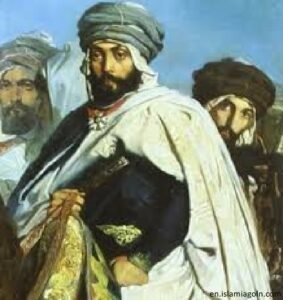
ON KNOWLEDGE AND WISDOM
Sulayman Tajir has praised India for its love of knowledge and expertise in medicine and philosophy. He has specially acknowledged Indian genius in the domain of religion. While writing about religion in China he says: “The Chinese people have learnt their religion from India. They acknowledge this fact frankly and say ‘India has given to us our Buddha’.
Sulayman says that ‘the Indians are extremely proficient in the knowledge of both medicine and astrology”.
Sulayman further says that
There is a section of priests and scholars who are known by the name of Brahma. Among them some are accomplished poets associated with the courts of the Kings and others are learned astrologers and philosophers. Some have mastered the art and technique to make predictions on the basis of their calculations, and then there are magicians and sorcerers who are a source of entertainment for people. In Kannauj they are found in large numbers.
(Sulayman, p. 167)
Another historian Masoodi has also observed that in the field of medicine Indians are very advanced. They have developed great expertise and mastery in controlling the diseases.

ON INDIAN PRIDE IN INDIA
Masoodi writes profusely about India and has special words of praise for Indians who pursue knowledge and wisdom with vigour. In his book Murawwajuz Zahb, he starts discussion on India with the following words:
Men of knowledge and vision who have devoted their lives to understand the secrets of beginning and end hold that in ancient times India was like ‘shining forehead’ of the face of earth. The tradition of wisdom and reform had taken deep roots in India much before other countries embarked on the road to civilisation.
He further says:
Indians believe that ‘human life and civilisation started with us and it will reach its culmination with us. The development and spreading of literature, arts and crafts are all rooted in Indian origin.’
(Masoodi, p. 102)
Masoodi pays rich tributes to India for having cultivated ethos and values that are the hallmark of a civilised and advanced people. He says:
In the beginning of civilisation, when the mankind settled itself in various parts of the earth, the Indians appear to have resolved that we shall not commit aggression against any other people. But in case of being attacked they were fully prepared to repel the aggression and subdue the enemy.
(Masoodi, p. 103)
ON EDUCATIONAL INSTITUTIONS
Sulayman Tajir says that
The people of India have a very comprehensive law code sanctioned by their religion. These laws are expounded and interpreted by the learned scholars who are formally trained in this law. These masters have their own schools where students come to learn and acquire knowledge from them. The erudite scholars in their lectures discuss religion, life story of great religious personalities and all contemporary issues:
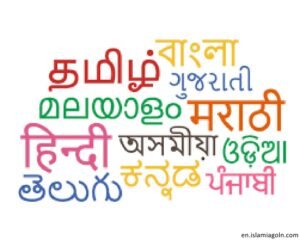
ON INDIAN LANGUAGES
Buzurg bin Shaharyar in his book Ajaibul Hmd (Wonders of India) has reported an interesting anecdote about one Spanish Arab Muslim who had boarded the ship piloted by an Iranian Muslim Abu Zohra. Shahryar says that for many days this Spanish Muslim remained confined to his bed but when he came out he offered Indian greetings to the Captain and the Captain likewise acknowledged his greetings in Indian language
In another report Buzurg says that the King of Kashmir known as Mehrook requested the ruler of Mansoora in 270 AH to send him a scholar who can render Islamic books into Hindi. The ruler of Mansoora dispatched one Muslim scholar who was fluent in both the languages and he translated many books including a few chapters of Quran for the King of Kashmir.
(Ajaibul Hind, p. 24)
Maulana Manazir Ahsan Geelani in his book notes that if this report is true then it can be justifiably claimed that Hindi was the first non- Arab language in which Quran was translated. Maulana says that the Arab keenness to learn Indian languages is evident from large number of Hindi words used by Arab historians of 8th and 9th centuries. The most common Arabic words that can be traced back to their Indian roots are Talay for Talao or water pond, Doney for Dengi or boat. Naghran for Nagraj or snake. Palanj for Palang or cot, and Al-Hindol for Hindol of palanquin, etc.
ON INDIAN EXPERTISE TO UNDERSTAND THE LANGUAGE OF BIRDS
Buzurg bin Shaharyar has claimed that he found many people in India who could understand the language of birds. He has reported an incident from an Iranian trader who while going back to Iran requested the local ruler to send with him a security guard to escort him to the border. The trader and the security man stopped during their journey for a meal.
While they were finishing their meal, a crow came and made some noise. The security man told the trader that the crow is saying he has a share in the rice that we have consumed and that soon will he get what belongs to him. The trader did not believe it as both of them had already finished all the rice they had. After resting for some time they resumed their journey and soon they found five men coming from opposite direction who pounced upon the security man and killed him with their swords.
The trader was scared but these men assured him that they have killed the man due to an old enmity and will do no harm to him and went back as they had promised. But what surprised the trader most was the fact that he saw the same crow eating rice that had come out of the stomach of the slain security man through sword wounds.
(Ajaibul Hind, p. 106)
Buzurg bin Shahryar has reported another episode from Moosa Sandapuri who said that he was sitting with the ruler of Sandapur and saw him smiling. On being asked the reason of smiling, the ruler pointed to a chameleon sitting on the wall, who said the ruler has informed him that some foreigners are expected to arrive at his court soon.
Moosa said that to me the remark was foolish and superstitious and I felt like moving away from the presence of the ruler. But before I could take his leave, the watchman came and informed the ruler that a trading ship from Oman has arrived at the port of Sandapur and then saw a group of traders laden with gift items arriving in the court to pay their respects to the ruler.
(Ajaibul Hind, p. 158)

ON INDIAN CITIES
Ibn Hauqal born in 336 AH makes following observations in his book after visiting some cities of Sind. Kutch and Multan (p. 227-228):
I have given brief account of the cities that I have visited but there are other cities of India like Farzan and Kannauj that lie beyond the desert deep inside the country. They can be compared with African cities like Lamta, Oodghasht, etc. It is difficult for the foreign traders to reach these cities except in the company of some Indians. The reason being that they are located at great distance and people who wish to make visit to these places often encounter problems they find difficult to overcome
He further says:
The ruler of Mansoora (Brahmanabad) is of Quraysh Arab origin, from the family of Habbar bin Aswad. This family had taken over the city and conducted the affairs in a manner that endeared them to the local people. However, in the Friday Khutba (Address before prayer) the name of Abbasi Caliph is mentioned and blessings are invoked for him.
On the same page Ibn Hauqal observes although the common Muslims attire themselves in a dress akin to the dress worn by people in Iraq but the members of the ruling family in their dress and hairstyle are close to ruling families of Indian origin.”
On p. 230. Ibn Hauqal gives detailed account about Multan, a city christened as ‘the gate to the House of Gold’ He makes specific mention of Saimoor and Qamahal, the two cities heavily inhabited by the people who subscribe to Buddhist faith. Ibn Hauqal says that Multan is ruled by Abul Qasim Basri who belongs to Ibn Lawi family of Quraish tribe
Discussing Multan Ibn Hauqal mentions about a grand place of worship in the city that has an idol of Buddha of gigantic size.
Another historian Ibn Athir has made an interesting remark about this magnificent adol of Buddha in Multan. He says that many people believe it to be the idol of biblical prophet Job.
Discussing this place of worship and the idol of Buddha, Ibn Hauqal says on p. 229. A part of the state income is allocated for the maintenance of this Idol House and its priests.
He further says that whenever other people plan to invade Multan to take possession of the idol, or lay siege around it, the people of Multan declare that if invaded they will demolish the idol and this threat sends the invaders back and the idol continues to remain in Multan.
Ibn Hauqal says that in the cities of Mansoora and Multan people speak Sindhi and Arabic languages.
It is clear from the writings of Ibn Hauqal that in coastal areas of India, the Muslims had started settling much before the arrival of Muslim armies in northern India. Referring to these areas Ibn Hauqal says:
From Khambayat to Saimoor, the area is identified with the author of Kitabul Amthal (Panchtantra). This area has some Muslim population. The Raja of Balhara always appoints a Muslim Governor to run the affairs of the Muslim population. This area has sizeable number of Mosques where regular daily prayers and congregational prayers on Fridays are held.
Another Muslim historian Buzurg bin Shahryar in his book Ajaibul Hind (Wonders of India) says that the Muslim official appointed to oversee Muslim affairs was designated as ‘Hunarman’ He enjoyed the same status as that of Qazi under Muslim rule. In cases where a Muslim was charged with a crime, the accused was handed over to the Hunarman to decide the case in accordance with Muslim law. (Ajaibul Hind, p. 161).
Maulana Manazir Ahsan Geelani commenting on the observation of Ajaibul Hind says, that though Hunarman appears to be a distorted version of Hunarmand (excellent, dexterous) but the more probable reason for coining this term is that it resonates with Brahman, the Hindu religious leaders who interpreted the law and adjudicated legal daputes and the term Hunarman was devised as parallel of Brahman to denote those who interpreted Islamic law and settled legal disputes of Muslims.
According to Ibn Hauqal, the local courts while deciding cases where both parties are non-Muslims give weight to the evidence of a Muslim witness and this is not resented by the party who is adversely affected. (Ibn Haugal, p. 228)
ON ABSTINENCE FROM ALCOHOLIC DRINKS
Sulayman has praised Indian aversion for alcoholic drinks. He says that the Chinese are fond of idling away their time but Indians disapprove of this. The other good thing about Indians is that generally they do not consume wine.
They do not abstain from drinking on account of any religious injunction but nurse a strong social aversion against drinking and hold it to be a taboo. One reason he has given for this aversion is that Indians believe that a ruler who indulges in drinking becomes incapable of protecting his people and running the government effectively. Therefore. Indians say that a ruler given to drinking ceases to be an effective ruler
(Sulayman Tajir, p. 52)
But Ibn Hauqal discussing the coastal areas says that this region has abundance of coconut trees. People make wine and vinegar both from coconut. These people consume Al Mazar (a kind of wine) and it is very similar to Nabeedh (wine made from dates) of Egypt. (Ibn Hauqal, P. 231)
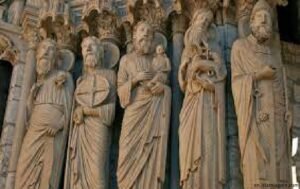
ON SEA VOYAGE AND UNTOUCHABILITY
Generally, it is believed that Indians disdained sea voyage as it was not viewed with favour by religious ordnances. But the accounts given by Arab historians present a different picture and show that Indians of eighth century not only undertook sea journeys but their social behaviour was free from the stains of untouchability.
They mixed freely with people of different social and religious background and had no problem partaking food prepared by foreigners. The only distinctive feature noted by Arabs was that the Indians while eating used different plates and two Indians did not eat from the same plate Sulayman gives detailed account of one group of Indian traders who had gone to Seeraf, an Iranian port town and were entertained by a local trader. Sulayman says:
The Indian traders, when they come to Seeraf (an Iranian port. accessible by ships only) generally come in a group of hundred or more. When they are invited by some local trader for a meal, care is taken to provide separate plate for each one of them. Whatever food is prepared is laid before them and each one of them eats from his plate only. They eat together but no two Indians share the plate.
ON AGRICULTURE, IRRIGATION AND FERTILITY OF LAND
The author of Masalikul Absaar reports from Sheikh Mubarak, an Arab traveller of the early eighth century and paints following picture of Indian agricultural scene.
India has a network of canals to meet its irrigation requirements. If we count large and small canals then the number shall be not less than one thousand. Some canals in India are so big that they can compete with Nile and others are smaller in size as they are found in other lands.
Describing the fertile green fields Sheikh Mubarak says:
In most cases the Indian people make their settlements on the banks of these rivers and canals. The country has all kinds of trees and the vision is captivated by the lush green fields spread all across the country.
Sheikh Mubarak describes the human friendly weather of India in the following words:
From the viewpoint of weather India is a moderate country. The climate is conducive for the cultivation and growth of various crops and other agricultural products. The summer of India is not oppressive and winter of India is not unbearable In fact we can say that in India all seasons are the seasons of spring as the cool breeze refreshes you during summer months and the sun makes its warmth available even during the cold of winter. Every season has its own charm and is enjoyable and the country receives adequate quantities of rainwater during four months of monsoon.
(Subhal Aashi Qalqashandi, p. 68)
Qalqashqandi quotes Sheikh Mubarak to describe the agricultural products: In this country, they grow twenty-one varieties of rice. Additionally the farmers produce wheat, barley, various kinds of lentils, beans, sesame and many varieties of other cereals.’
The author devotes a few pages to discuss the qualities of sugarcane produced in India and makes special mention of one particular variety that is blackish on top and is so soft that it is chewed by people to enjoy its sweet juice. He describes in detail the sweets of India and the sixty five varieties that are available in the market.
Qalqashqandi describes the cultivation of various kinds of fruits and says that ‘in India, sweet, sour and bitter, all kind of fruits are grown. There are many fruits available in the markets which are not even known in Syria or Egypt.
Among fruits mango appears to have captured the imagination of Arab writers. Ibn Hasqal and Qalqashqandi both have heaped praises on this king of fruits. They appear to be amazed at the countless varieties of mangoes, the difference of their tastes and texture and are of one opinion in saying that in this one fruit the nature has united the tastes and qualities of many fruits.
The comment of the author of Masalikul Absaar on the non- availability of Fool (a kind of beans very popular in Egypt and other Arab countries) shows the high esteem and regard that the Arabs had for India. He says that Fool is not found in India and the probable reason is that the learned among India feel that the consumption of Fool is not good for the health of human mind and intelligence’.

FINAL WORD
Mohammed bin Abdur Rahim Aqleeshi in his book Tohfatul Albab says:
India is a vast country. Justice and equity inform all its social life and institutions. The nature has endowed this land with its blessings and favours generously. The political traditions of India are excellent and the well-being and prosperity of the people is all too evident. The administration is effective to ensure all round peace and people live in an atmosphere free from any kind of fear and intimidation.
Commenting on the Indian love of knowledge the author says:
The people of India are proficient in various branches of knowledge and pay special attention to philosophy, medicine and mathematics. They show great talent in pursuing various useful crafts and invent new technologies.
In a final tribute to India, he says:
I used to hear various fascinating reports about India. The accounts were so captivating that it was difficult to believe them and it was not possible to check their veracity on account of long distance. Finally, my studies revealed that the real India is far more profound in its wisdom and majestic in its beauty than the aggregate of all those stories in circulation.
He further says:
What is India? It is enough to know that its rivers are full of pearls and the lands are the storehouse of gold. Its mountains have precious stones and its islands have camphor and other fragrant woods. Its cities are seats of great kings and its forests are full of elephants and rhinos. The best swords are made of Indian iron and each product of India is precious.
India commands large armies and Indians love to pursue knowledge and wisdom. India is one country whose inhabitants have mastered the art of exercising great control over their passions and desires and this is something that for sure brings man closer to God.
See more:
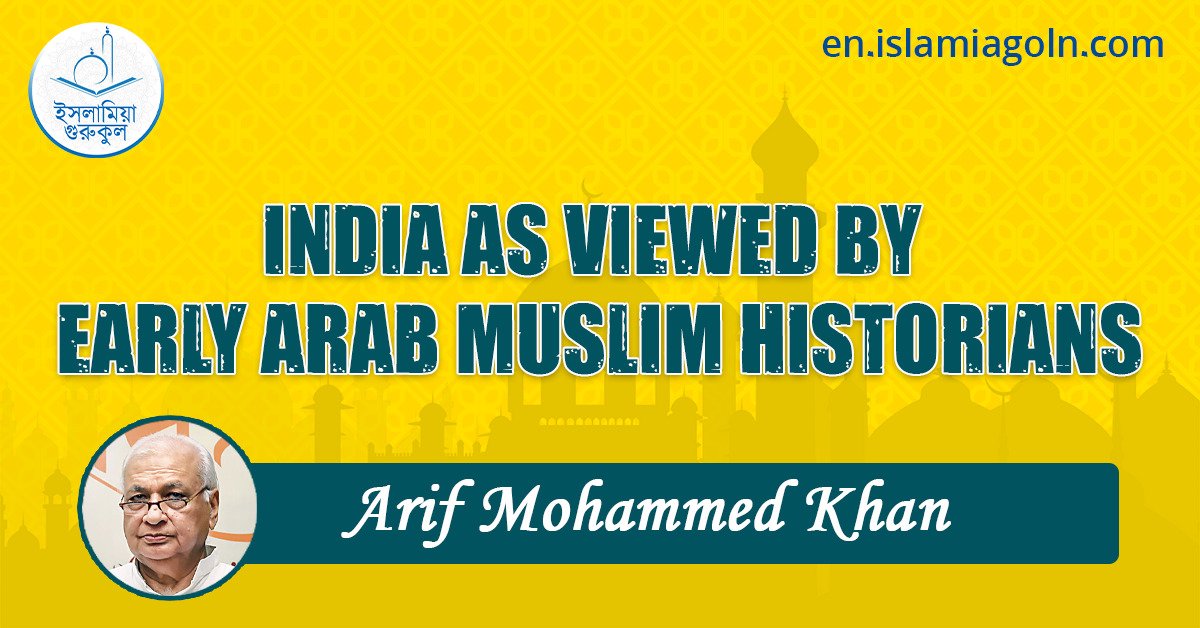
2 thoughts on “INDIA AS VIEWED BY EARLY ARAB MUSLIM HISTORIANS”